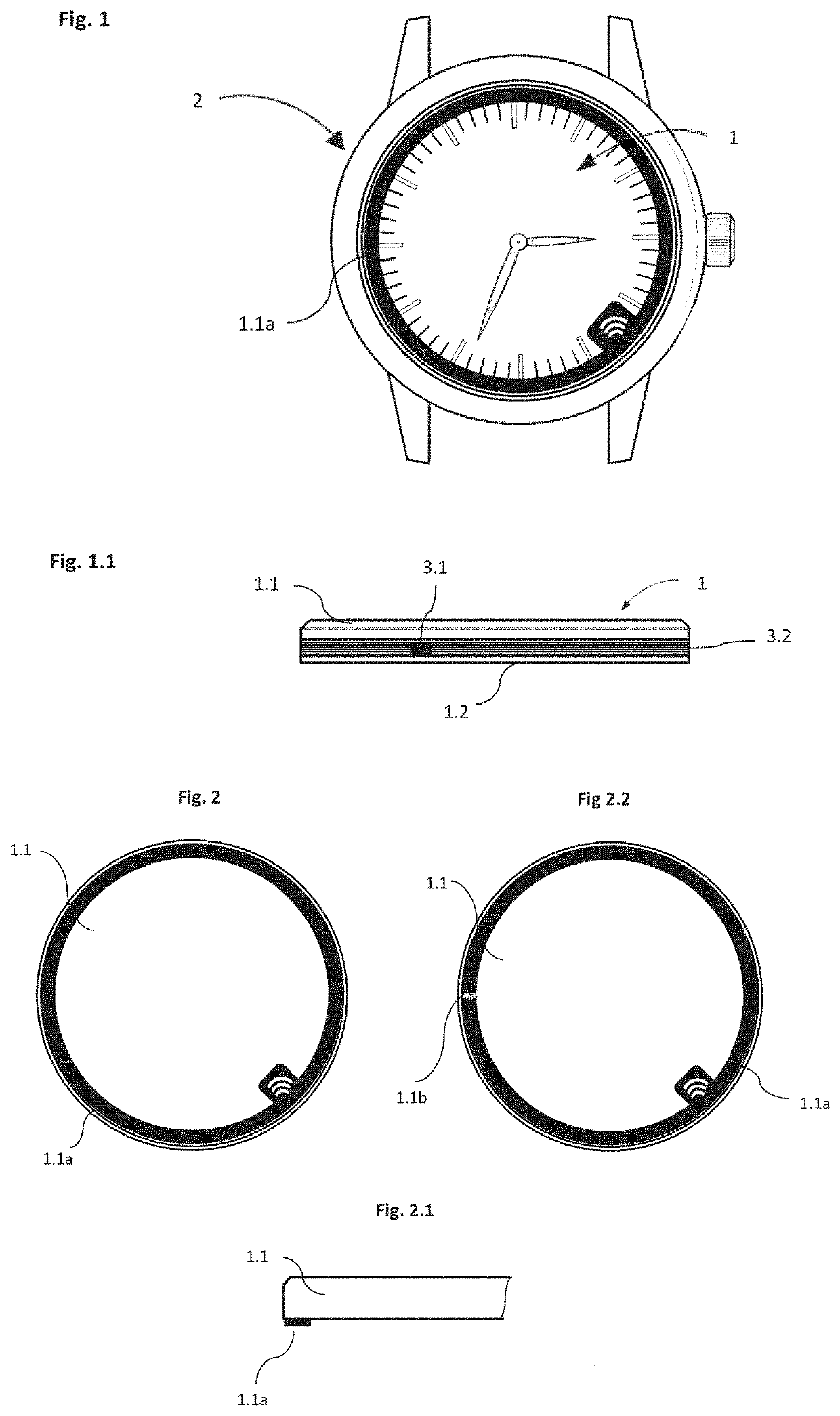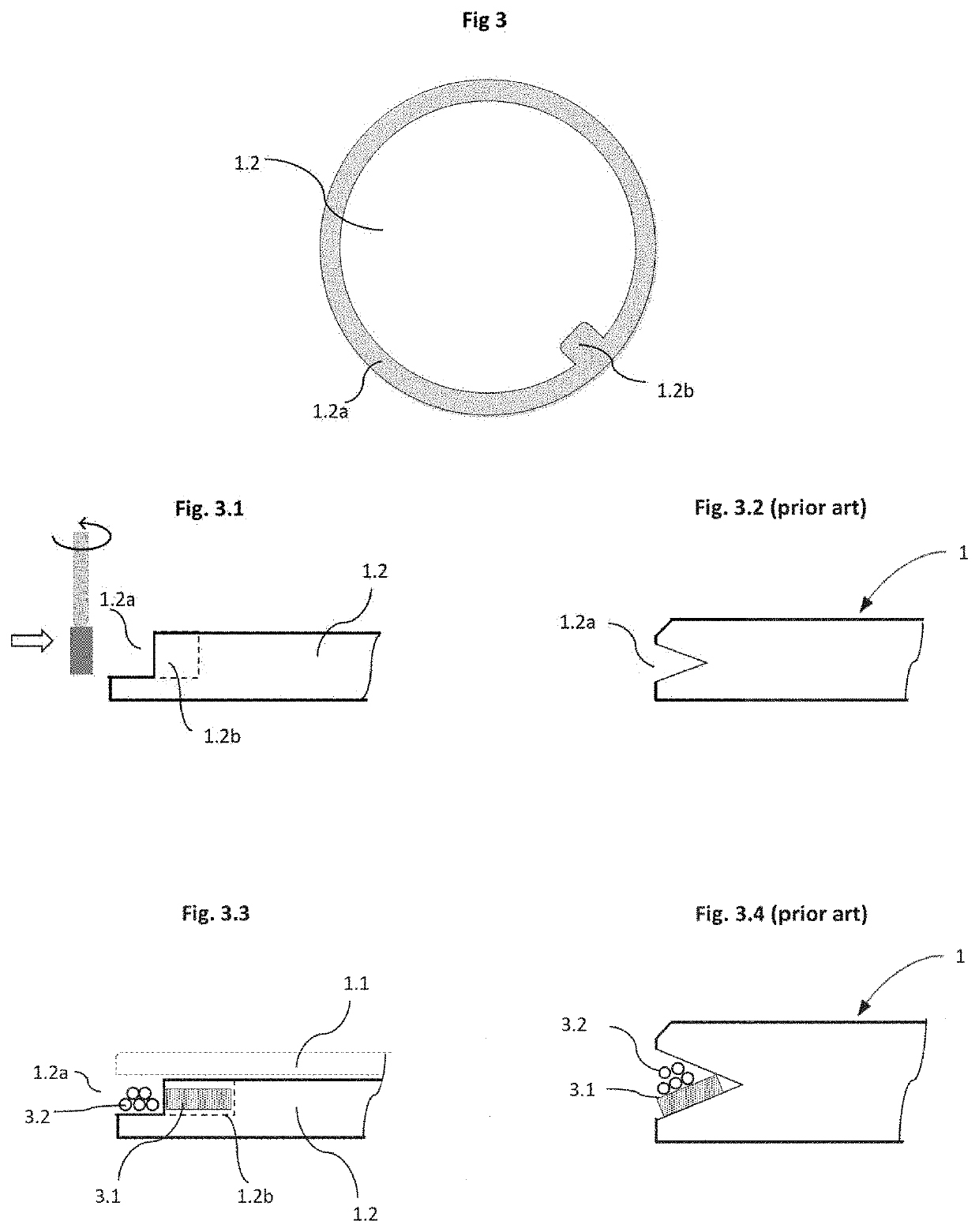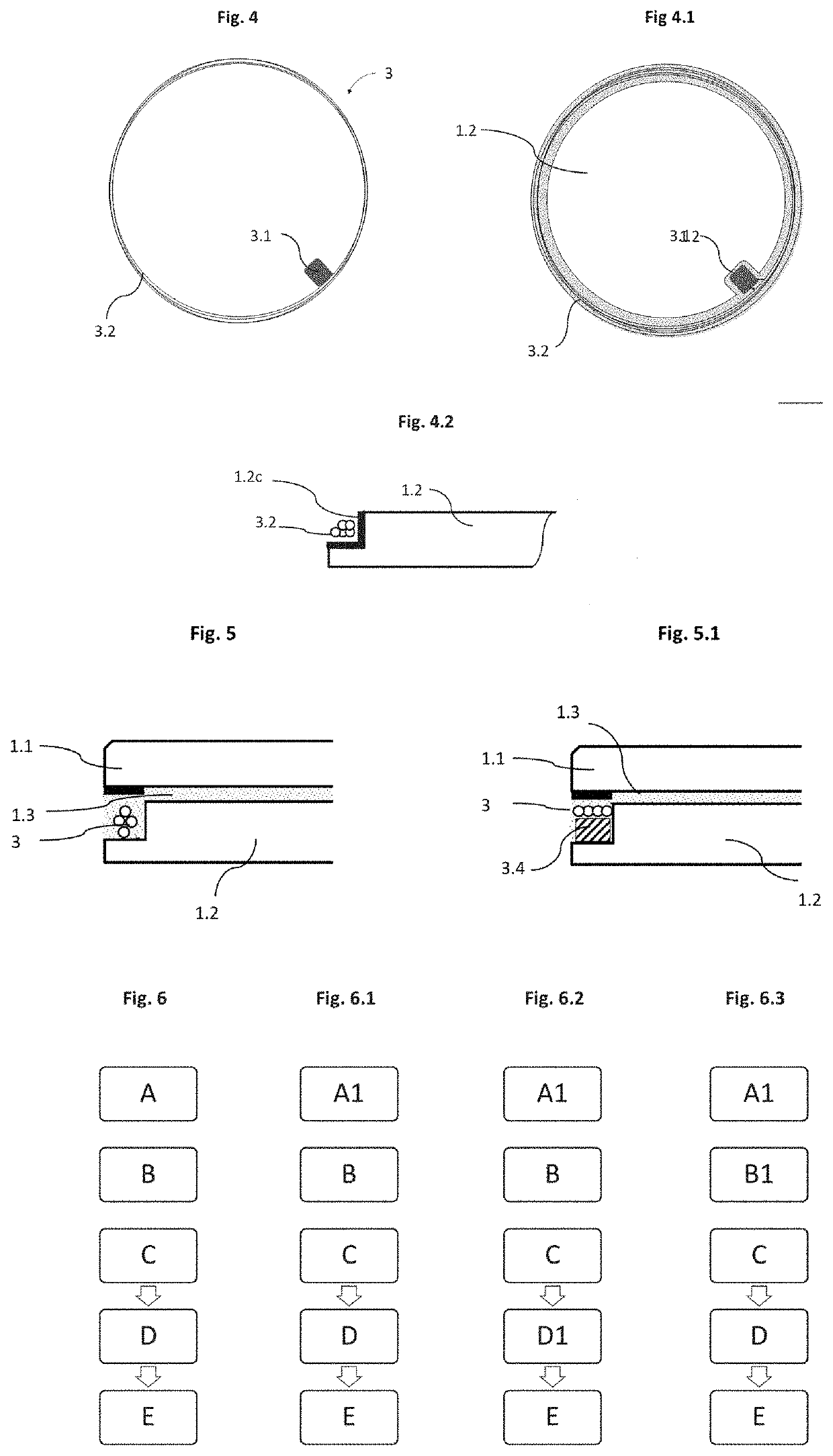However, this patent is silent on how to integrate a
transponder into the glass of a watch and therefore lacks
clarity in such a way that a person skilled in the art cannot execute it.
The volume of material to be machined to integrate a very small electronic module is necessarily low.
On the other hand, the integration of a larger-sized NFC module immediately becomes a technical headache.
A major drawback in this process is that it is difficult to properly
machine a recess around the periphery but in particular in the side face of the watch glass, especially if the glass is made of a hard material that is difficult to work with, such as the
sapphire crystal (
corundum).
Machining with CNC tools risks damaging the glass, which is made of a very brittle hard material, resulting in microcracks, chipping or chipping on the edges during the
machining performed in the glass and making it optically and aesthetically unusable.
In addition, the area above the sidewall of the recess, in which often the chamfer is shaped (chamfer which is the small area formed by a
cut edge), may crumble or worse yet, may break throughout of the zone of the edge and of the chamfer thus weakened by the eroding, respectively by the milling with a CNC tool, which renders the glass unusable and leads to significant losses in work pieces and high production costs.
But this
slow motion work will necessarily result in long production times and therefore high production costs for producing and will
pose technical and aesthetic problems of integrating a thicker watch glass into a watch.
Another
disadvantage of this proposed method is the lack of flexibility in the shaping of the groove which is only very limited, for the most part only a recess with a simple shape such as for example a linear groove worked horizontally by CNC
machining with
a Diamond disc, often V-shaped is suitable, or simple round drilling is possible.
A
machining is not possible to be carried out properly by the method disclosed by patent EP1597636B1, because no CNC tool is currently suitable for this kind of milling to create the notch horizontally in depth in the groove.
Machining the groove and notch with vertical sidewalls at right angles (for example L-shaped) so that the NFC module can fill the space in the groove with its antenna and the
integrated circuit as much as possible with its antenna and the
integrated circuit in the notch, with the least space and size possible, is simply not possible to be executed in the thickness of a side face of the watch glass by the prior art.
Because these sidewalls are V-shaped and / or rounded and unworked and the groove and the notch to place the module inside must both be machined larger; and larger the groove and the notch have to be in relation to the size and the thickness of the glass, the more fragile, and unsightly and therefore unsaleable commercially the watch becomes.
It should be noted that the machining by
laser ablation would theoretically be possible, but would be far too expensive and would take far too much time for the process of
ablation of microlayers in the glass.
The
disadvantage of the absence of a specific notch in which to position the microcircuit or
microprocessor generates the need to thicken the machining in order to be able to superimpose the microcircuit or
microprocessor on the
copper coil forming the antenna, with the consequence of having to insert the NFC module on thicker glasses, thus preventing the glass watch from being use in a range of watches requiring thinner glasses.
Machining more deeply to be able to align the
copper coil and the microcircuit horizontally would have even more disadvantages, in addition to the technical and economic constraints already listed, the circle containing the NFC module would need to be enlarged around its entire periphery, creating a visual aspect much less discreet and elegant.
Finally, another drawback of the method is that it does not make it possible to achieve a satisfactory solution for hiding the module from view in the groove and the notch when the glass is viewed from the top.
For example, printing or
metallizing an aesthetic
coating covering to the eye with or without textual or symbolic decoration is not possible.
As the sidewalls cannot be polished and remain rough, a smooth and shiny
coating for example, obtained by
screen printing or by applying a
metallic coating, are not possible and the optical and aesthetic rendering obtained by a cover painting made by hand with a
brush or spray, will have a matte appearance, resulting in an imperfect finish and compromising the quality of the end product.
Another drawback is that an NFC module type comprising a
copper coil forming the circular antenna connected to the
integrated circuit forming the NFC module could not be placed as one piece into the recess and the notch.
But this kind of antenna is unusual and complicated to produce.
The prior art therefore does not offer the possibility of carrying out a production of a watch glass with an NFC module in a satisfactory manner for the production of a high-quality watch part (which may comprise
sapphire crystal), for use in medium and high-end watches.
 Login to View More
Login to View More  Login to View More
Login to View More 


